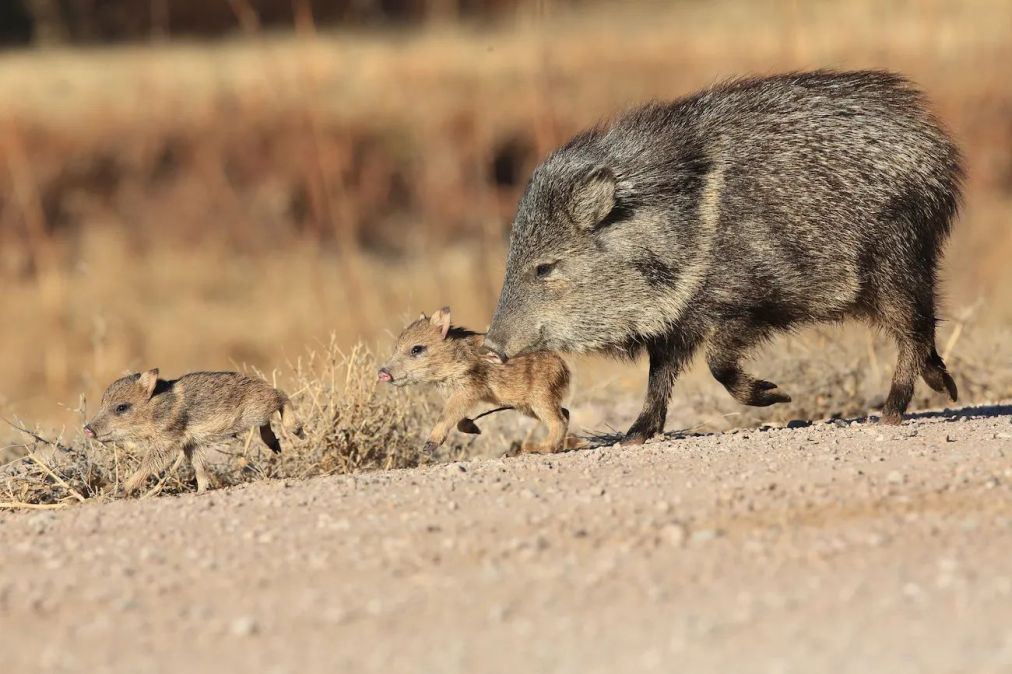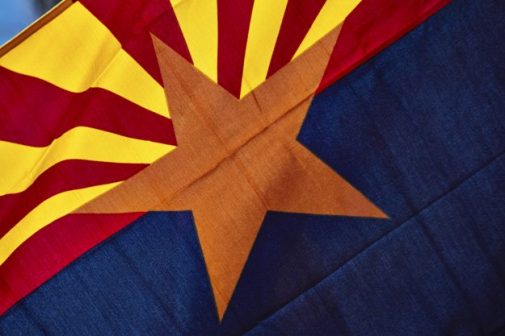Arizona’s new data warehouse tracks wildlife, including those pesky javelina

The data management system Arizona’s Game and Fish Department uses to track the locations of javelinas and other wildlife in the state is getting a major overhaul.
Last month, the wild, pig-like creatures made international headlines for ravaging a prestigious golf course in Sedona. While officials with the state’s game department said they don’t track every herd of javelina in the state, learning more about their habits will soon be easier. The state’s biologists, researchers and wildlife managers are currently consolidating all of the wildlife tracking data into a new, cloud-based management system known as the wildlife data warehouse.
The efforts are part of Arizona’s 10-year plan for managing wildlife and the natural environment. With the data available all in one place, Arizona’s wildlife researchers told StateScoop, they can help conservationists, policymakers and land developers make more-informed decisions about how to coexist with wildlife, including those pesky javelina.
‘It’s Ethel’
In Arizona, the javelina, also called a peccary or skunk pig, is classified as a big game species, which means they’re illegal to injure, trap or kill, even if they are pestering golfers or causing other problems.
To monitor the javelinas roaming around Arizona’s urban and suburban areas — or destroying golf courses in search of worms — Larry Phoenix, an Arizona Game and Fish Department regional supervisor, said state researchers put collars on some of the beasts to study their movement. He said the collars ping at least three times a day and plot the data to a map.
Phoenix said that up until the new system went live back in March, the collected datasets — from wildlife tracking collars, tags, field collections and other sources — were stored separately. The information was also only available to the researchers studying a particular species, whether it was frogs, bears or javelinas. Now the data’s been combined.
“Now, ultimately, it lands in what we called our wildlife data warehouse,” he said. “Basically, it’s a database, and so all that information does get stored into there and then that way, anybody — myself or any other person — can actually go into there and start looking at that data.”
Phoenix said the wildlife department has thousands of tracking collars monitoring the movements of various species of mammals, reptiles, amphibians and fish, but the state isn’t tracking specific javelina, even the problematic ones.
“We really don’t have it down to, ‘Oh, that is Javelina 123-Adam,’ or that kind of thing,” Phoenix said. “We just don’t, or even have names like ‘it’s Ethel’ — we don’t have it down to that precise information.”
Help with tough calls
Triska Hoover, an Arizona wildlife conservation strategy program manager, said the department is still in the beginning phases of importing data to the wildlife data warehouse.
“We just launched it for our Wildlife Management Division, and we’ve asked them to start putting their data in there in phases, because we realized that there’s a lot of data,” Hoover said. “We’d like to see all that data in there, including data that’s in filing cabinets or on paper somewhere.”
Hoover said that it could take up to three years for all of the state’s wildlife tracking data to be uploaded. She said there’s a massive amount of data and each wildlife research program has a different way of formatting its data. Once in the new warehouse, Hoover said, most of the data will be in a geospatial format so it can be displayed on a map.
Esther Rubin, Arizona Game and Fish’s research branch chief, said the new system will help her team of about 20 researchers more effectively answer questions and drive better decision making for the state. She said that in wildlife management, there are often tough calls to make — such as how best to relocate a population of bighorn sheep or deciding how many pronghorn game permits to issue during hunting season to maintain a sustainable harvest.
“I’d say that the department prides itself in making data-driven decisions,” Rubin said. “Oftentimes, there isn’t like an, ‘Oh, this is the easy, obvious decision.’ Or we may have stakeholders who think that we should be doing something differently. And so to help inform our decisions, ultimately, that is the reason that we have data and that’s the reason we have the research branch.”
Future of coexisting
Despite not having the tracking data on the specific javelina destroying golf courses, even the general movement data and trends can help the state plan development of areas where javelinas and other protected species live.
“We often are asked by developers to provide input,” Rubin said. “When they’re planning for new construction, we get asked about: ‘What kind of impact will this have?’ And so then that data about what kinds of wildlife occurs there, what their status is, what kind of habitat they need — that all can help us provide the best recommendations.”
But the real value of the new system, she said, is for the future of research. Eventually, the wildlife data warehouse should be able to pull in other sources of data, such as weather trends. From there, researchers would be able to cross-reference datasets and identify new patterns.
“I always think about the future when we’re gone, we’re all retired 20 years from now and somebody wants to look at trends in — I don’t know — let’s just say turkey populations across seasons. And they might have a question about how precipitation or drought influence it,” Rubin said. “So being able to go back in time gives them a more complete dataset for analyzing the trends and with statistics. As you can imagine, the more complete dataset you have with more variation over time, the more you’ll be able to see as far as patterns.”
For Hoover, identifying these opportunities is the next phase of the department’s work, and Arizona’s residents and wildlife alike can stand to benefit from better understandings of how to coexist.
“We’re still trying to strategize behind the scenes to figure out where we can go with all of this data and having it more accessible,” Hoover said. “But we hope to be able to use it for planning and it being able to help us answer questions as we move to more development and more population in the state so that we can make better decisions.”



